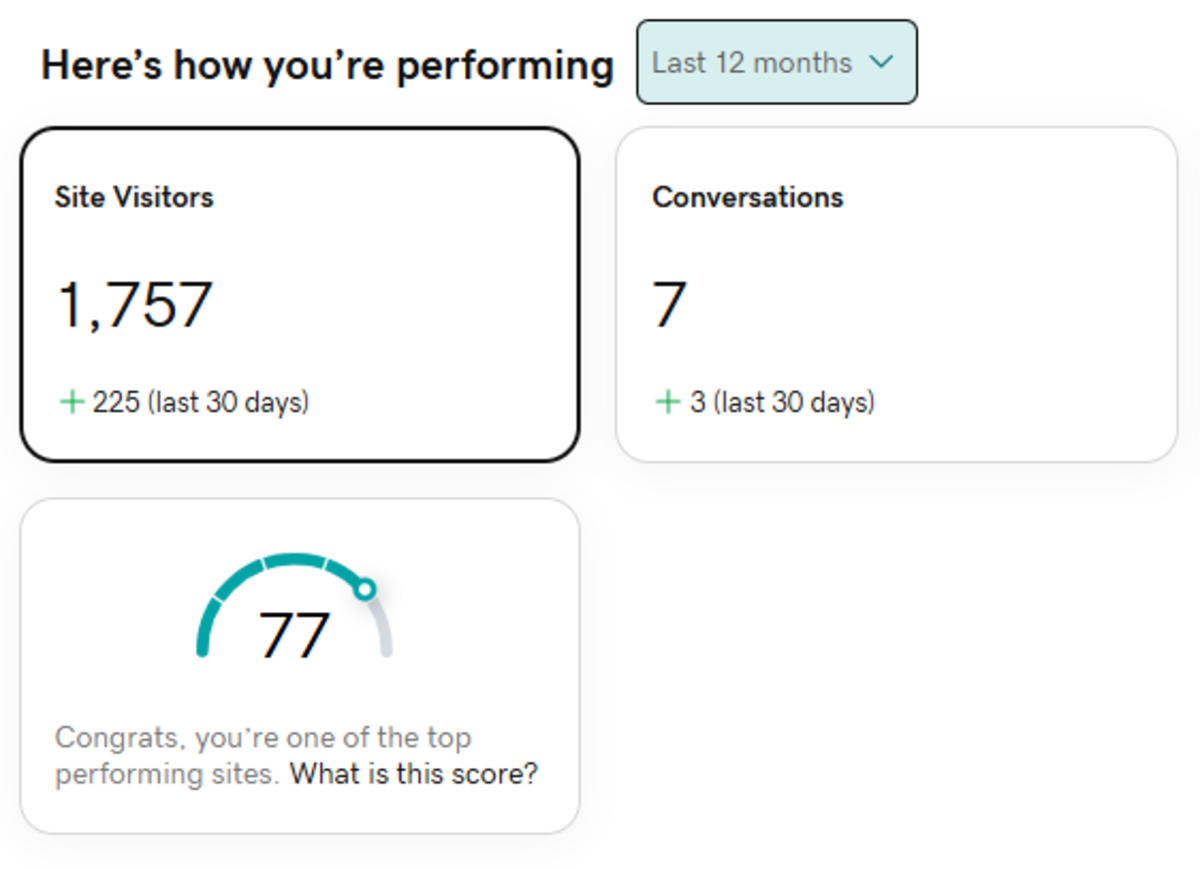Are you being penalized by Search Engines due to your web designer?
Is your web developer ensuring your brand new website is being penalized in Search Engines?
Web developers are often grounded in HTML, CSS and JavaScript code. They simply did not learn anything about Search EngineOptimization (SEO) while they were learning how to code.
Hence, there are quite a few SEO things that a web developer just does not do when creating a website. Web developers often have a blind spot when it comes to SEO.
Here are some of the SEO things that get missed out on or are just plain ignored by developers.

Google Analytics
Inserting Google Analytics code appropriately into the website template is essential to any website marketing effort. Inserting Google Analytics code into the website template streams valuable website data back to Google.
The data streamed back to Google, by the Google Analytics code embedded in the website’s template, provides amazing feedback to the website owner when learning how the website is being found on the Internet and what content on the website is of the most interest to site visitors.
Even the most inexperienced website marketer knows how priceless historical website data is, especially if this data is available right from the time when the website went live on the Internet. Yet it’s surprising just how many websites are launched on the Internet without any Google Analytics code being added to them at all.
Just make sure that your website developer:
1. Creates your Google Analytics account with Google
2. Then adds the Google Analytics, code snippet, to every page on the website
Then either you as website owner or your SEO specialist will have access to very important information via the Google Analytics User interface and Google web master tools which will be invaluable when wanting to tweak the website to deliver great results.

Ensure That The Website Uses Semantic URLs
A semantic URL is essentially a URL for a website page that makes sense when a human being reads the URL.
An example of a semantic URL for a website page describing Joomla-widgets would be:
http://www.examplesite.com/Joomla-widgets/
However, very often what is seen is a URL like this:
http://www.example.com/index.php?page_id=102
The trouble is this URL is a bit of a disaster for SEO. For example, there are no keywords in this ULR which are pretty useful and important for on-page SEO.
As website owner you need not be concerned about how the website developer does this. Just make sure that your website developer implements semantic URLs on your website. Also ensure that the website developer trains you on how to control the semantic URL of each page of the website in case you want to make web page changes later on your own.

XML Site Maps
Every Search engine loves a Sitemap. Sitemap plugins for a website are generally free of cost and really easy to set up. These plugins automate the creation of Sitemaps for a website. Sitemaps are definitely always worth using as they are a tried and tested technique for making any website search engine friendly.
Sitemaps are generally not a problem to generate manually either. There are several free tools that do this. However, if your website content is updated often ( and it should be ), generating its sitemap manually and then using it can become a real pain pretty quickly.
Today it’s so much better for a website to be built using a Content Management System (CMS) which generates / updates a Sitemap automatically whenever website content changes.
A lot of CMS will do this natively or with the aid of a plugin. If you're having a custom CMS written for your website, make sure your web developer includes automatic Sitemap creation and updation capabilities within the CMS core itself.

301 Redirects
A lot of web developers actually appear to know little or nothing about 301 Redirects written in the .htaccess file which is placed in the root folder of the website.
Their argument?
They are programmers and have never been exposed to Web server based redirects. This approach is pretty short sighted on behalf of web developers and can cause a website’s rank to drop very sharply in Search Engine Result Pages especially if as website owner you are migrating an old site to a new one.
When structuring the new website, it’s pretty much impossible to ensure that all the new website’s pages will have exactly the same URL as the old website pages.
Now let’s assume that Google ( and other search engines ) had extensively indexed the old website. Then every link in the search engines index has the potential of returning a 404 Page Not Found Server error, quite simply because the URL held in the search engines index points to a nonexistent web page in the new site.
So as website owner you have this spanking, sparkling new website, that from a search engine’s perspective only throws 404 Page Not Found errors for almost all ( if not all ) of the links in their index.
Hence your website page rank will tank. You will have a beautiful new website which ranks on SERP page 200. No one finds the website.
In a word Terrible.
Now if set of 301 redirect rules were written in the .htaccess file which had the old web page URL on the left hand side redirected to the new URL on the right hand side every link in the search engine indexes would work perfectly, no 404 Page Not Found errors would ever be thrown by the new website.
Largely because the web server knows that if a request is received for an old URL it just has to redirect this URL request to the new URL.
Bingo no more 404 Page Not Found web server errors throw. The website page rank stays intact. A definite win:win for everyone.
Hence as web site owner if you are redoing your website, giving it a great new look and feel, with a great new user experience thrown in, ensure that your web developer understands exactly how important it is to you that they be able to structure 301 redirect rules correctly, even before they make any changes to the old website.
While writing 301 redirect rules are not rocket science, the job is really very tedious and time consuming. Every single web page URL of the old site has to be documented carefully.
Next every single web page URL of the new site has to be documented carefully.
Then these have to be equally carefully matched using 301 Redirect rules.
Then each such rule entered in the .htaccess file has to be tested.
Hence a ton of web developers love to side step this issue much to the detriment of website and the website owner.

Canonicalization Of Website URLs
Many website developers make the same HTML content available via different URLs. Let’s say you are a clothing website owner and one of your top selling items is the classic – Little Black Dress.
Obviously you would want the product page for the Little Black Dress to be accessible through several different URLs, and your website developer will oblige.
Do be careful of this please because Google and other search engines will see this as duplicate content on the website. Google will crib about this via Google Webmaster Tools forever ( well almost ) and penalize the website’s page rank in Google’s index.
Definitely bad for business.
The easiest to understand for the website owner is the use of www versus no www in a website’s URL. From an SEO perspective, it doesn't matter which you choose, but you have to choose one and stick to it.
Otherwise as far as search engines are concerned there are two ULRs that deliver exactly the same content ( i.e. the index page of the website ), they are:
http://www[websitename].com
And
http://[websitename].com
Fixing this involves writing a simple 301 redirect rule:
www to no www
OR
No www to www
Whichever you want to adopt as a standard for your website.
Next do make sure that the CMS you’ve chosen, or E-Commerce framework, or anything else is not generating multiple URLs for a single webpage. Magento for example ( a great E-Commerce package ) makes a single website page available via three different URLs by default.
This issue can also be fixed using 301 redirect rules in the website’s .htaccess file.
Your Web developer must be competent to do this or you are paying good money and buying search engine trouble.
Finally, please do implement the canonical tag itself. At its most basic level, the canonical tag tells Google and other search engines what the definitive URL of a webpage should be.
Even if you are convinced that your CMS is definitely not generating multiple URLs per webpage, it is still worth implementing.
The canonical tag is dead easy to implement and should appear within the codespec of every webpage. It looks like this:
[link rel="canonical" href="http://www.websitename.com/pagename.html" /]
Your web developer must ensure that this is done for your website.

Site Speed
Site speed is now part of Google’s website ranking algorithm.
Here Google and other search engines are testing to see just how long your webpage takes to load in a Browser.
The time taken for your website page to load in a Browser is colored by a lot of things:
How many HTTP round trips must the Browser make to your webserver before the entire page is downloaded?
This becomes a particular problem when the webpage has a large number of images on it. In that case the Browser has to make one round trip to the webserver per image.
Hence your web developer must know coding techniques like converting all the images to a Sprite and then downloading one Sprite from the webserver. Finally extracting individual images out of the Sprite and displaying them appropriately on the web page.

Using gzip On The Web Server
Your web developer must know how to set up gzip compression on the web server, so that HTML and other files delivered by the web server to a requesting Browser are zipped and sent. This results in a smaller download file size, hence a shorter file download time.
- Your web developer must know how to
- Load JavaScript asynchronously
- Use cookie less domains
- Use a Content Delivery Network ( CND ) such as CloudFlare to really speed up a large number of simultaneous image downloads.
If all of this sounds pretty technical, quite honestly, it is. Luckily, as website owner you do not need to understand how to do any of this, you just need to ensure that your web developer can take care of this for you.
In Conclusion
Do make really sure that your web developer gets these basics sorted right from the very start of building your spanking new website.
This will guarantee that your on page SEO runs like a well maintained Swiss clock leaving you free to concentrate on building great content.
Believe me please when I say none of what has been explained above is optional.
Ivan Bayross
Open source tutorials | Open source training








